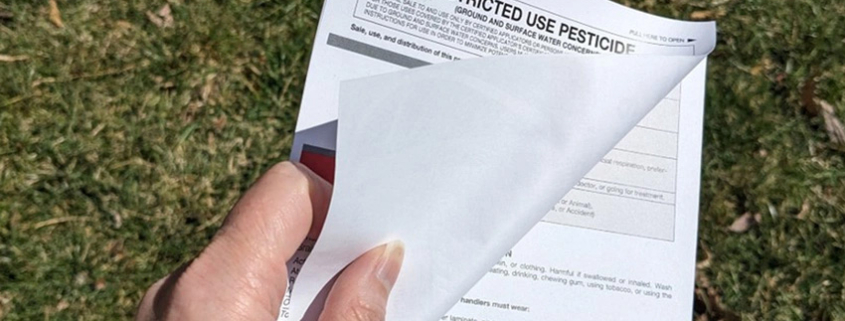How to apply pesticides safely
Soybean Source: By adhering to these pesticide safety reminders, farmers can protect their crops, the environment and their own well-being.
by Betsy Danielson
During pesticide application season, it’s crucial for farmers to prioritize pesticide safety. Proper handling, application and protective measures are essential to safeguard crops as well as protect human health and the environment. Let’s explore some key reminders:
Select the product. Choose a pesticide that will control the target pest and that best fits your needs, equipment and application site requirements. Purchase only the amount of pesticide needed for the season. If you must store the pesticide, store the smallest quantity for the shortest amount of time possible. Keep pesticides locked up to prevent access by children, unauthorized people and vandals.
Know your pesticides. Before applying any pesticide, familiarize yourself with its label instructions. Understand the active ingredients, target pests and recommended application rates. It is also important to recognize the potential impact that different pesticides have on crops, beneficial insects and the environment.
Calibrate your equipment. Precise calibration ensures that your pesticide applications are accurate. Underapplication may not fully control the pest, leading to a reapplication that costs more time and money. Overapplication may damage or injure the crop, leave illegal residues, and lead to fines or being liable for damages from a misapplication. Regularly check nozzles, pressure and flow rates throughout the growing season to ensure you are properly calibrated.
Check the site. Before applying a pesticide, check whether there are people, animals or plants present at the site or nearby that might be harmed by the application. Whenever possible, take special precautions to avoid direct application to these areas. Some pesticide labels may instruct you to comply with regulations and requirements beyond the label itself. For example, a pesticide label might refer you to check an Endangered Species Protection Bulletin or the FieldWatch Inc. registries prior to the application.
Weather conditions matter. Choose the right time for application. Minimize pesticide drift and volatilization by following label guidelines regarding temperature and wind speed. Low temperatures slow down or stop the activity of some pesticides, while high humidity and rain can also affect the product’s efficacy. If necessary, delay applications until conditions improve.
Protect yourself. Wearing personal protective equipment (PPE) is your first line of defense against pesticide exposure. If the pesticide label doesn’t refer to PPE, wear a long-sleeve shirt, long pants, shoes and socks. After handling pesticides, wash your hands and any exposed skin thoroughly. Wash clothes exposed to pesticides separately from other laundry.
Prepare for pesticide incidents
Pesticide exposure. Providing first aid may be all you need to do reduce the effects of the exposure. However, you may need to seek additional medical attention. In these situations, provide first aid until the victim can be transported to a medical facility, or call 911. It’s important to note that before administering first aid, put on proper PPE to prevent potential exposure to yourself. First aid treatments are listed on each product label. Always keep a first aid kit nearby that includes a small bottle of detergent, sterile bandages and tape, eyewash and emergency contact numbers.
Pesticide spills. Keep a spill kit nearby wherever pesticides are handled. Spill kits are available for purchase or you can compile your own. The kit should be compatible with the pesticides you are using, contain all necessary equipment and materials to manage a spill, and be well-maintained. In the event of a large or dangerous spill, do not leave the site unattended. Have someone get help or call 911.
Keep accurate records
Maintain detailed records of pesticide applications. Include dates, products used, rates, and weather conditions. Keeping good records is a valuable defense if there is a complaint or legal action following an application.
Danielson is an Iowa State University Extension and Outreach specialist in the Pesticide Safety Education Program.
Original article – How to apply pesticides safely (farmprogress.com)







Leave a Reply
Want to join the discussion?Feel free to contribute!